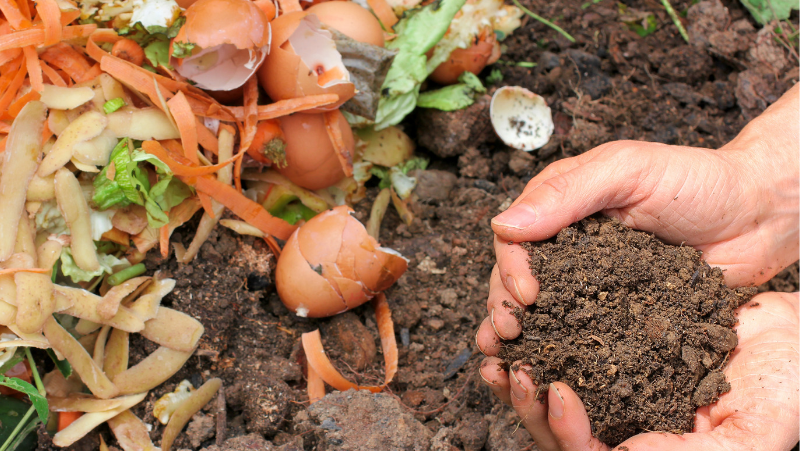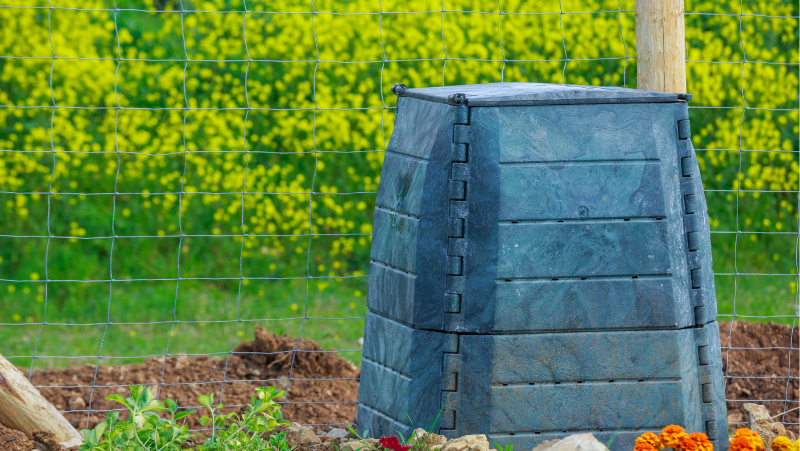Yates Account
Join now
Create a Yates account today!
Sign up to join the Yates Garden Club for monthly e-mails packed with seasonal inspiration, tips for success & exclusive promotions.
Plus if you’re a Garden Club member you can take part in the Yates Growing Community - a blog to share successes, get advice & win prizes in fun challenges along the way!

Forgot password
Enter the email address associated with your account, and we'll email you a new password.

Making your own garden compost is a lot easier than you may realise. With a simple compost heap you can recycle most of your organic household and garden waste and in turn enrich your garden’s soil at the same time. It’s also an extremely satisfying way to help the environment.
By turning food scraps and organic garden waste into compost you can:
-
Improve soil quality and garden vitality by releasing rich nutrients into the soil.
-
Help suppress plant diseases and pests; this reduces or eliminates the need for chemical fertilisers and manures, helping you save money.
-
Reduce the amount of organic waste going to landfill; therefore preventing greenhouse gas emissions and leachate which can pollute land, groundwater and waterways.
-
Help soils retain moisture – you won't need to water as often.
-
Help absorb and filter runoff, protecting streams from erosion and pollution.
A composting system helps contain all the organic matter and the conditions created by the compost system help accelerate the breakdown of the materials. A composting system can be started in old rubbish bins, wooden boxes, or in a simple heap.

Composting organisms require four equally important components to work effectively:
-
Nitrogen (Green ingredients): supply your pile with nitrogen which grow and reproduce organisms to oxidise the carbon. These additions are often green and wet: kitchen scraps, fresh lawn clippings, weeds pulled from your garden. Every pile needs the green ingredients, but if all you have is green stuff, your pile can turn stinky and mucky. Too much green stuff can lead to a rotting pile instead of a composting heap.
-
Carbon: (Brown ingredients): supply your pile with carbon for energy (heat). These items are often brown and drier -fallen leaves, branches, hedge clippings, straw, etc. The carbon is very necessary but again, too much has its consequences. If you have a pile with mostly prunings from your hedge and other woody stuff, the pile can take years to break down. It can sit there and linger in your back yard and you may begin to make plans to will your compost to your grandchildren.
-
Oxygen, for oxidizing the carbon, facilitating the decomposition process. Done by regularly turning the mixture.
Hint: If your compost becomes starved of oxygen, then it starts to produce greenhouse gases - so it's important to get air into your compost heap, for example by turning it regularly. -
Water: mixture should be moist, but not soaking wet to maintain activity without causing anaerobic conditions
Hint: Make sure your material is cut into a small particle size as smaller particles break down more rapidly
Balance of ingredients
Good compost is produced by blending leafy ‘green’ matter with harder ‘brown’ matter. ‘Green’ matter includes grass clippings, vegetable scraps, and soft green prunings. ‘Brown’ matter is shredded woody branches, dried leaves, straw and shredded newspaper.
Try to add brown and green matter in layers, not making any layer too thick. If you put in too much green matter, the compost may go sludgy and smelly. Too much brown matter and it won’t break down quickly. With a good balance of the two, composting will proceed quickly.
Every time you add in material, sprinkle a handful of Yates Dynamic Lifter Organic Plant Food on top of the mix. This encourages beneficial microorganisms which facilitate the breakdown of the materials.
What to add to a Compost Heap
-
Vegetable and food scraps
-
Fallen leaves (in layers)
-
Dead flowers
-
Weeds
-
Grass cuttings in layers
-
Coffee grounds
-
Tea leaves (synthetic teabags don't break down in compost, so only add compostable teabags; check the packaging for compost certification)
-
Soft stems
-
Old potting mix
-
Egg shells
-
Old newspapers (wet)
-
Used vegetable cooking oil
-
Sawdust (not from treated timber)
What not to add to a Compost Heap
-
Meat and dairy products
-
Fat
-
Diseased plants
-
Metals, plastic, glass
-
Animal manures (especially the droppings of cats and dogs)
-
Large branches
-
Weeds that have seeds or underground stems
-
Glossy magazines
-
Bread or cake (may attract mice)
1. Choose a Site: Place your compost heap or bin in a well-drained area that has some shade. Too much sun will dry out your compost.
2. What to Compost: See the list above and remember compost needs a mixture of nitrogen-rich organic materials such as fruit and vegetable peelings, and green garden vegetation such as fresh grass clippings and green leaves.
3. Layering: Start with a thick layer of coarse material (~15cm), such as twigs or mulch, this is used for aeration and drainage. Then follow with a layered A,B,C system using the materials above
A. Garden clippings and kitchen scraps
B. Dry leaves and paper
C. Lightly water after each layer to keep the heap moist but not wet. Repeat steps ABC. Finish with step D.
D. Sprinkle Yates Dynamic Lifter Organic Plant Food on top of the pile to encourage beneficial microbes, which help break down the materials.
4. Maintaining Your Compost: Keep your compost well aerated to prevent foul odours or methane. Turn your compost with a garden fork on a weekly basis. Otherwise, place garden stakes or pipes through the heap to allow air in.
Depending on the mix of ingredients, the duration for the compost to turn into a rich soil can be anything from 6 weeks to 6 months.
Hint: If your mix is wet or saturated, mix more dry brown material through it and turn.















Share
Share this article on social media